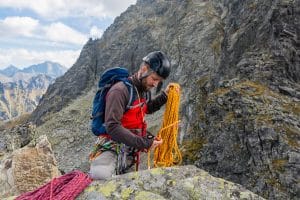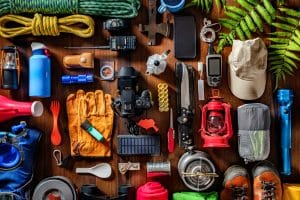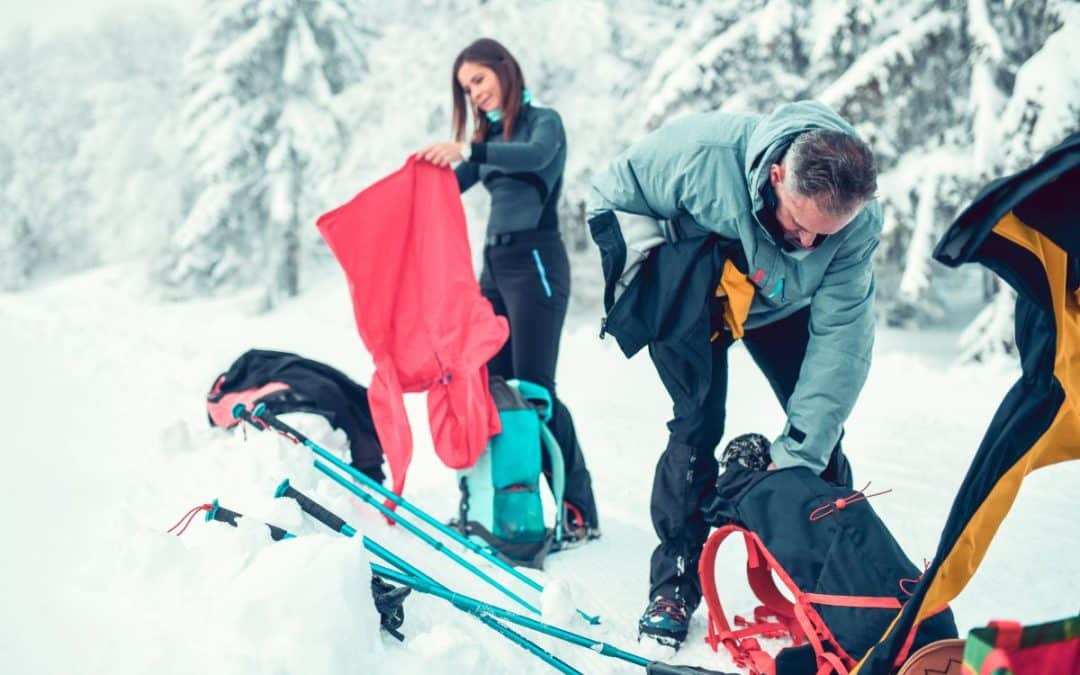At MER outdoor gear store in Colorado Springs, we know a thing or two about outdoor gear maintenance. As Southern Colorado’s leading consignor of gently used outdoor recreational gear, we inspect hundreds of pieces of equipment and clothing each month to ensure they meet our gold standards of quality and safety.
This month, we are sharing our top tips for maintaining your gear so you can have maximum enjoyment in your outdoor adventures.
Importance of Outdoor Gear Maintenance
Outdoor gear maintenance is not just about keeping your equipment clean and shiny but also about ensuring functionality and longevity. Maintenance contributes to cost-saving as it reduces the need for frequent replacements.
Additionally, the environmental impact of maintaining and reusing your gear is significant. By reducing waste and the demand for new production involving energy consumption and raw material extraction, maintaining your gear is an eco-friendly practice that aligns with sustainability principles.
Outdoor Gear Maintenance Tips
Here are some essential tips to help you correctly maintain and extend the lifespan of your outdoor gear.
Understand Your Gear
Each piece of outdoor equipment is unique and requires specific care. Understanding how to use and maintain each piece of equipment correctly is vital to the longevity and safety of the gear. Manufacturers typically provide care instructions that you should follow to keep your gear in top condition. If you purchase your equipment second-hand, you can likely find the manufacturer’s recommendations with a quick Google search.
Keep it Clean
Cleaning is a fundamental aspect of outdoor gear maintenance. Dirt and grime can wear down various materials over time, leading to degradation. After each Colorado adventure, clean your equipment before storing it.
Dry Thoroughly
Moisture can lead to mildew, which can degrade the material of your gear. Therefore, after cleaning, always dry your gear thoroughly before storage. Air-drying is sufficient for most items, but you may want to avoid direct sunlight, which can fade colors and weaken materials.
Repair Damage Promptly
Prompt repair of any damage can prevent further deterioration. Small rips or loose seams can turn into significant problems if left unattended. Consider carrying a repair kit during your adventures for any immediate repairs.
Store the Right Way
Proper storage extends the lifespan of your gear. Store in a dry, cool, locations, and avoid direct sunlight. Furthermore, do not store gear in compressed form as it could lose its insulating properties.
Inspect Before and After Every Adventure
Regular inspection can help you spot potential problems before they escalate and is an essential element of outdoor gear maintenance. Before leaving on your trek, look for any damage that could have occurred during storage, especially if this is the first time you use the item this season. Once you return home, look for signs of wear and tear and repair as needed.

Protect Your Gear
Use additional protective gear, like equipment covers or carry bags, to protect your equipment from harsh weather conditions and rough handling.
Respect Weight Limits
Many pieces of outdoor gear have a specific weight limit that you should not exceed. Even something as practical as a backpack has limits to how much you can carry without damaging and tearing seams, clips, and zippers. Respecting weight limits is especially vital when using climbing equipment or other safety gear.
Lubricate Moving Parts
Moving parts, like zippers, clips, or joints, are more prone to damage than stationary or fixed parts. Ensure they are well lubricated to prevent rusting and wear and tear.
Retire Gear When Necessary
Despite all your outdoor gear maintenance efforts, there comes a time when you’ll need to retire a beloved piece of equipment. That does not mean you have to toss your trekking poles or other gear from climbing your first 14er. But don’t compromise your safety on the side of sentimentality. Safety in Colorado’s wilderness should always come first!
Instead, visit MER outdoor gear store in Colorado Springs to upgrade your gear affordably.

Care for Specific Types of Outdoor Gear
Different types of outdoor gear require different care and maintenance practices. Here are some tips on how to care for common types of outdoor gear.
Tents
Extended exposure to various elements, including sun, rain, and wind, can degrade the quality of a tent over time. Here are some maintenance tips:
- Cleaning: Use mild soaps and soft sponges to clean your tent. Harsh detergents can damage the tent’s fabric and waterproof coating.
- Drying: Always ensure your tent is completely dry before storing. Putting a wet tent into storage can lead to mildew formation.
- Storage: Store the tent loosely packed in a cool, dry place. While compressing your tent or other soft gear may seem like a space-saver, you may suffer a loss of resilience and loft.
- Repairs: Fix any rips and tears as soon as possible. Many tents come with repair kits, including fabric patches and pole repair splints.
Sleeping Bags
Sleeping bags provide comfort during camping nights. Proper care will ensure they remain fluffy and warm.
- Cleaning: Most sleeping bags are machine washable. However, check the care instructions before washing. Use a gentle cycle and mild detergent.
- Drying: Air-dry the sleeping bag or use a dryer on a low heat setting. Make sure the sleeping bag is fully dry before placing in storage.
- Storage: Store sleeping bags in large cotton storage sacks, not the tiny stuff sacks provided for backpacking. This will help maintain the insulation loft.
Hiking Boots
Good hiking boots can withstand harsh conditions but still need proper care.
- Cleaning: Remove dirt and mud using a stiff brush. For stubborn dirt and grime, use a mild soap and water.
- Drying: Dry your boots at room temperature. Never dry them on a radiator or in direct sunlight, as extreme temperatures can crack the leather.
- Waterproofing: Regularly treat your boots with a waterproofing agent to maintain their water resistance.
Backpacks
Backpacks carry all your essential gear. They can get pretty dirty and require regular cleaning.
- Cleaning: Most backpacks can be cleaned using a soft brush with mild detergent and warm water.
- Drying: Always air-dry your backpack. Avoid direct sunlight, and don’t use a dryer.
- Storage: Store in a dry place away from sharp objects that could puncture it.
For information on outdoor gear maintenance for climbers, please see our blog: Should I Buy Used Climbing Gear?
How MER’s Standards for Outdoor Gear Maintenance Benefit You
At MER outdoor gear store in Colorado Springs, we know that a great deal on gear is only as great as the gear itself. For that reason, every piece of used outdoor gear and equipment we sell is inspected for quality, integrity, and safety before hitting our sales floor. Our uncompromising standards for items accepted for consignment ensure you receive the best price on the best brand-name gear.
Whether consigning or buying, MER is the gold standard you can trust for all your outdoor adventures. Please stop by our store in Colorado Springs today!
Lots to do. MER gets you going.

